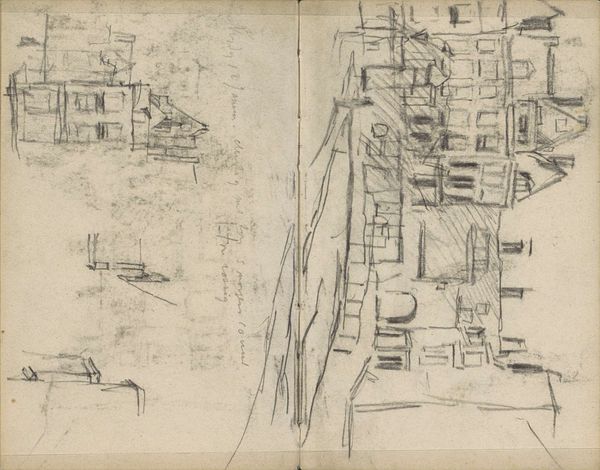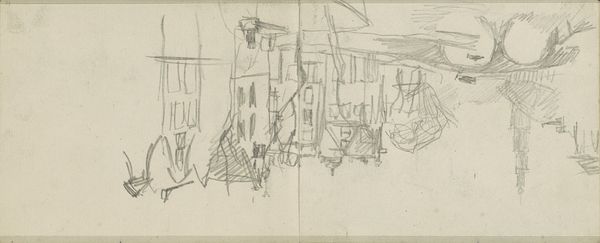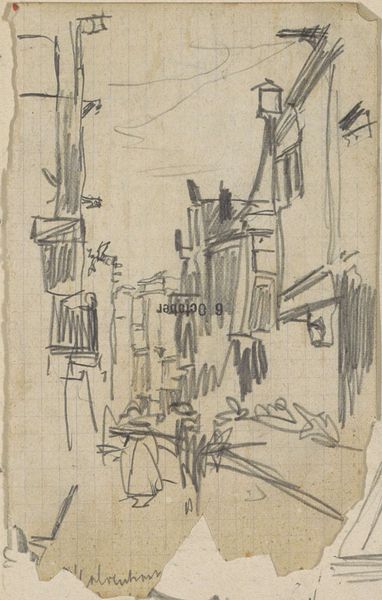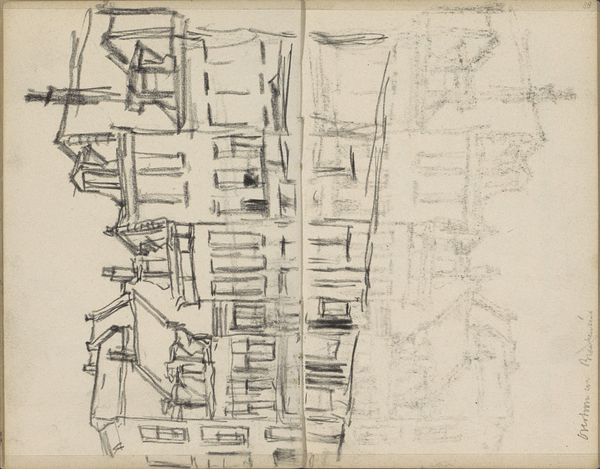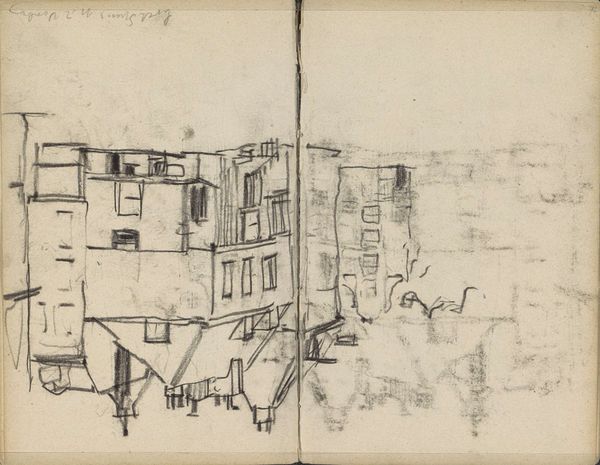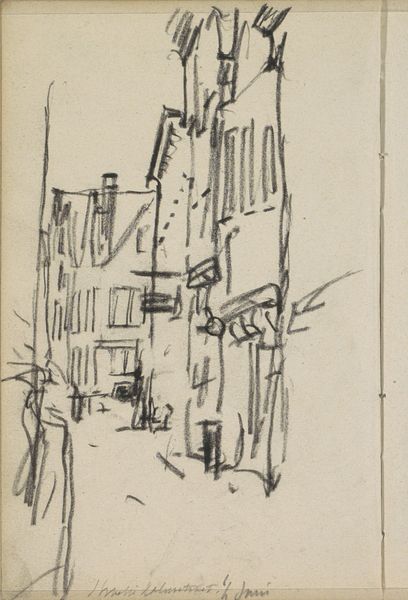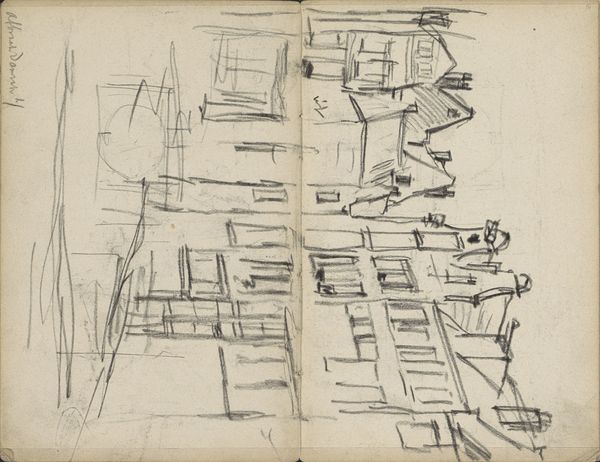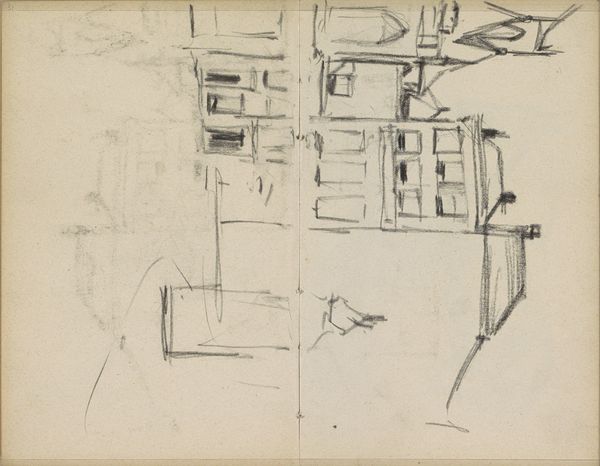
Oude Spiegelstraat te Amsterdam, gezien vanaf de brug over het Singel naar de Prinsengracht 1886 - 1908
0:00
0:00
georgehendrikbreitner
Rijksmuseum
Copyright: Rijks Museum: Open Domain
Editor: We're looking at "Oude Spiegelstraat te Amsterdam, gezien vanaf de brug over het Singel naar de Prinsengracht" by George Hendrik Breitner, made sometime between 1886 and 1908. It's a graphite drawing. It has this immediate feeling of urban energy but also… incompleteness, almost like a fleeting memory. What's your read on it? Curator: Precisely, it offers an interesting study in form. The swift, assured lines articulate the architectural space. Observe how Breitner employs graphite not for realistic depiction, but for structural exploration. Editor: Structural exploration? Curator: Indeed. The rhythmic repetition of vertical lines defining the buildings, the stark contrast created by the light… it suggests a dynamic interplay. Notice how the composition guides our eyes along the street’s receding perspective. There's no illusionistic depth, rather, it flattens the space. Editor: So, it's less about the scene itself and more about how Breitner uses line and perspective? Curator: One could say it's about visual architecture rather than literal architecture. The beauty here exists not in a picturesque view, but in the formal language—the grammar, if you will—of the city. Editor: That makes sense. So, it's less Impressionistic than I initially thought, focusing more on line and composition, disregarding subject to achieve an exercise in structure. I will look more deeply from now on, trying to interpret and explore works with my own perspective before searching for a meaning through cultural or historical knowledge. Curator: Exactly. Approaching the work as a world of self-sufficient signs opens other venues for interpretation, enriching one’s sensibility.
Comments
No comments
Be the first to comment and join the conversation on the ultimate creative platform.
